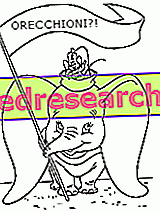What's this
What is a loin?
Loin or loin is the name used to indicate one of the most consumed cuts of meat; it is also considered a piece of good value, or the right compromise between the very famous fillet and the back cuts - for example the rump, the ham or parts of it etc.

From the anatomical point of view, the loins - each animal has two, separated into one by half - correspond to specific muscles: the lumbar. Moreover, depending on the animal from which it is made, the loin can be an essential element of particular cuts of meat or recipes. These are classic examples of beef: the rib-cut bone - half vertebra - the boneless entrecote - from which the "tagliata" - the Florentine steak, the t-bone and the porterhouse - is usually obtained - these last three, slightly different in thickness and anatomical point, they are also inclusive of thread in different percentages. Moreover, in the Florentine steak, the loin is also identified as a "sirloin". From the veal and lamb, young animals, you get the whole carrè with ribs or ribs. From pork instead, the loin attached to half vertebra is portioned into chops with bone, sometimes provided with a "handle" - which would then be the rib. In some areas this cut is commonly referred to as a "stick".
The loin, in addition to being of medium-high cost - depending on the animal from which it is made - also has discrete nutritional properties. Obviously, as with all cuts of meat and various fishery products, these depend above all on: the subspecies or animal race, sex, age, nutritional status and processing level. Generally, being naturally poor in connective tissue, although it is moderately stressed in the movements of the animal, the loin is tender, not too fat - although this can vary quite a lot depending on the trimming, breed and breeding method - and on average digestible.
From a strictly dietary point of view, the loin belongs to the first fundamental group of foods - foods rich in high biological value proteins, vitamins (especially water-soluble from group B) and specific minerals (especially iron). However, cholesterol is not lacking, saturated fats - fortunately not prevalent on unsaturated fats - abundant purines and phenylalanine amino acid - these last two factors, not tolerated by those suffering from the specific metabolic complication. In general, large portions of loin are always inadvisable; even more so in overweight, hypercholesterolemia, hyperuricemia, phenylketonuria, in those suffering from digestive complications and liver or kidney diseases.
In the kitchen the loin is used above all to prepare second courses; this does not remove the fact that it can be an excellent quality ingredient for selected minced destined for sauces, meatballs, hamburgers, etc. It is suitable for intense and quick cooking, such as grilling, grilling and possibly in the pan. Being rather soft - as long as it is cooked the right way - it lends itself to being eaten "to the blood". Note : sometimes, the boneless sirloin of beef, or the entrecote, is replaced by a less valuable and much less expensive cut of meat, the rump. With the loin it is possible to produce a sausage sausage, unmilled, called lonzino.
The quality of the loin may depend not only on the raw material, but also on the processing. In fact, it is one of the cuts that, in beef, changes the most following the maturation, or that sort of "mummification" that occurs leaving it whole and in a cold room - at low temperature but slightly above 0 ° C - necessary to let it dry the meat and to make it mature superior taste and aroma. However, this causes a lower yield of the meat, which dehydrates and requires a greater degree of trimming before cooking - to discard the slightly unpleasant surface layer from the aromatic point of view - loses weight and increases in cost. This, which can also be useful for certain animals in the game group - so-called black meat - does not apply to other meats, such as pork.
Nutritional Properties
Nutritional properties of the loin
Seen from the first fundamental group, the loin is a food rich in high biological value proteins, specific vitamins and minerals. It has a medium or high energy intake - depending on the species, breed, the state of nutrition and the level of cleansing of the superficial fat - but it can also fluctuate a lot according to the variables we mentioned in the introduction. What many people do not know is that, given the nutritional status of contemporary animals, very often the light pork loin is thinner and less caloric than that of beef belonging to certain fattening breeds.
The calories of the loin are supplied mainly by proteins and lipids; carbohydrates are absent. Peptides have a high biological value, that is they contain all the essential amino acids in the right quantities and proportions with respect to the human model. Fatty acids are mainly unsaturated, especially monounsaturated, sometimes followed almost equally by the saturated; the polyunsaturated fats, consisting predominantly of omega 6, are the least significant fat portion. Cholesterol is present in significant quantities but all in all acceptable - lower than those of egg yolk, crustaceans, certain molluscs, offal, etc.
The loin does not contain dietary fiber, gluten and lactose; if matured, it can mature small concentrations of histamine - especially outside. Instead it has significant amounts of purines and phenylalanine amino acids.
From the vitamin point of view, the loin is a food that does not differ from the average of the products belonging to the same category - meats. It contains above all water-soluble vitamins of group B, in particular niacin (vit PP), pyridoxine (vit B6) and cobalamin (vit B12); thiamine (B1), riboflavin (B2), pantothenic acid (vit B5), biotin (vit H) and folates are less relevant. Ascorbic acid (vitamin C) and all the fat-soluble (vit A, vit D, vit E, vit K) seem almost absent or almost irrelevant.
Even with regards to mineral salts, the loin does not stray too far from its group. The content of iron is good, but also of zinc and phosphorus; also brings potassium.
| Nutritious | Beef Loin | Light Pork Loin |
| water | 72.3 g | 70.7 g |
| Protein | 21.8 g | 20.7 g |
| Lipids | 5.2 g | 7.0 g |
| Saturated fatty acids | 1.73 g | 2.23 g |
| Monounsaturated Fatty Acids | 1.69 g | 2.38 g |
| Polyunsaturated Fatty Acids | 1.03 g | 1.82 g |
| Cholesterol | - mg | 61.0 mg |
| TOT Carbohydrates | 0.0 g | 0.0 g |
| Starch / Glycogen | 0.0 g | 0.0 g |
| Soluble Sugar | 0.0 g | 0.0 g |
| Food fiber | 0.0 g | 0.0 g |
| Soluble | 0.0 g | 0.0 g |
| Insoluble | 0.0 g | 0.0 g |
| Power | 134.0 kcal | 146.0 kcal |
| Sodium | 44.0 mg | 73.0 mg |
| Potassium | 333.0 mg | 220.0 mg |
| Iron | 1.4 mg | 1.3 mg |
| Football | 4.0 mg | 7.0 mg |
| Phosphorus | 178.0 mg | 150.0 mg |
| Magnesium | 18.0 mg | - mg |
| Zinc | 4.0 mg | 1.8 mg |
| Copper | 0.06 mg | 0.15 mg |
| Selenium | 6.0 mcg | 14.0 mcg |
| Thiamine or vitamin B1 | 0.10 mg | 0.25 mg |
| Riboflavin or vitamin B2 | 0.15 mg | 0.30 mg |
| Niacin or vitamin PP | 4.70 mg | 4.0 mg |
| Vitamin B6 | - mg | - mg |
| folate | - mcg | - mcg |
| Vitamin B12 | - mcg | - mcg |
| Vitamin C or Ascorbic Acid | 0.0 mg | - mg |
| Vitamin A or RAE | tr | tr |
| Vitamin D | - IU | - IU |
| Vitamin K | - mcg | - mcg |
| Vitamin E or Alpha Tocopherol | - mg | - mg |
Diet
Loin in the diet
The loin is a food that can be inserted in most diets, but not too frequently and systematically. If obtained from a young animal, then lean, without the addition of seasonings and well trimmed from the superficial fat - from animals of average age, therefore not mature - it could also be used in the diet of certain clinical conditions such as severe overweight and hypercholesterolemia. On the contrary, it would be better to prefer lean meats like chicken breast, turkey breast, horse muscle, lean fish, etc.
The loin, rich in proteins with high biological value, is very useful in the diet of those who have a greater need for all the essential amino acids; for example: pregnancy and lactation, growth, extremely intense and / or prolonged sports, old age - due to an eating disorder and a tendency to geriatric malabsorption - pathological malabsorption, recovery from specific or generalized malnutrition, debasement etc.
For the reasonable content of cholesterol and the acceptable percentage of saturated fats, it can be used in the diet against hypercholesterolemia, as long as the portion and frequency of consumption are acceptable. Note : in food therapy against dyslipidemia it is however less appropriate than fish - pinnutes properly called - rich in omega 3 (EPA and DHA). It is a neutral food for diets aimed at subjects suffering from hyperglycemia or type 2 diabetes mellitus, hypertriglyceridemia and hypertension, except in the presence of severe overweight.
The loin is one of the products to be avoided - especially that obtained from game - or in any case to be consumed with extreme moderation, in case of severe hyperuricemia - tendency to gout - and calculosis or renal lithiasis with uric acid crystals. It should be completely excluded from the phenylketonuria diet. It does not show contraindications for lactose intolerance and for celiac disease; it should also be harmless for histamine intolerance.
The loin is an appreciable source of bio-available iron and participates in the coverage of metabolic needs, which is higher in fertile, pregnant women, marathon runners and vegetarians - especially in vegans. Note : iron deficiency can lead to iron deficiency anemia. It contributes to satisfying the phosphorus requirement, a very abundant mineral in the body - in particular in the bones in the form of hydroxyapatite, in the phospholipids of the cell membranes and in the nervous tissue etc. The zinc content - essential for hormone production and antioxidant enzymes - is more than appreciable. It is not to be considered an essential source of potassium, but still participates in satisfying the organism's request - greater in case of increased sweating, for example in sports, increased diuresis and diarrhea; the lack of this alkalizing ion - necessary for the membrane potential and very useful in the fight against primary arterial hypertension - induces, especially related to lack of magnesium and dehydration, the onset of muscle cramps and general weakness.
The loin is very rich in B vitamins, all coenzymatic factors of great importance in cellular processes. It can therefore be considered an excellent support for the functioning of the various body tissues.
It is not allowed in the vegetarian and vegan diet. It is inadequate for Hindu and Buddhist food; the beef loin should be considered a kosher and halal food - as long as it meets the specific slaughtering criteria. After total cooking, it is also allowed in the diet during pregnancy. The average portion of loin is about 100-150 g.
Kitchen
Cook the loin
The loin is a cut of meat that lends itself to any type of preparation, especially for quick or medium-duration cooking; some even like it raw. Let us not forget that from the loin it is also possible to obtain a salted sausage - unmilled - of pork or wild boar or other game, fairly prized, called "lonzino".
Pork is often used in the formulation of lean minced meat, together with some cuts of the thigh; without the addition of fatty cuts, it is not suitable for making hamburgers, meatballs, sausages and meat sauce, etc. The most suitable methods of heat transmission are conduction (from metal to meat; more rarely from oil to meat), convection (from air to meat) and radiation (from embers, which release infrared, to meat) . The recommended temperatures are almost always very high and the times generally low or moderate; some recommend low temperature cooking. The most widely used cooking techniques or systems are: grilled and spit-roasted - both grilled and gas and stone - baked, grilled, pan-fried and, albeit rarely, fried. Loin is often used to obtain whole roasts; it is however obligatory to specify that, being a fairly thin cut, it can be problematic. An overly intense and / or prolonged cooking will determine the contraction of the collagen fibers, the consequent squeezing of the cells with leakage of liquid and dehydration of the meat; the result will be that of a dry, hard and stringy roast.
Roast Beef in Salt Crust
X Problems with video playback? Reload from YouTube Go to Video Page Go to Video Recipes Section Watch the video on youtubeThe most famous recipes based on loin with bone are: grilled beef rib - considered a Florentine steak without fillet - t-bone and porterhouse. On the other hand, from the loin of beef cut into steaks of entrecote cooked on the grill or on the plate, you get the cut with rocket and parmesan or with garlic oil and rosemary, if left whole and cooked in the oven instead is common the roast beef. With the loin of veal cut into thin slices it is possible to make the scallop notes and the Roman saltinbocca. From the pork loin are made numerous types of whole roast to be baked or braised - even stuffed; cut into slices instead, it can be the base of the medallions in the pan - natural, floured or in sauce. As anticipated, there are several who also appreciate the carpaccio and the tartar of loin taken from cattle, deer and a few other animals.
The food and wine pairing depends above all on the specific recipe.
Description
Description of the loin
The animals from which the loin can be obtained are of the biological class Mammalia (especially the Suidae, Bovidae, Equidae and Cervidae families), more precisely:: bull or cow (Genus Bos and taurus species), pigs and wild boar (Genus Sus and species scrofa ), bison (Genus Bison and bison species), buffalo (Genus Bufalus and bubalis species), horse (Genus Equus and ferus species), donkey or donkey (Gene Equus and species asinus ) deer (Genus Cervus and species alaphus ), fallow deer (Genus Dama and dama species), moose (Genus Alces and species alces ) etc. Note : the two most common are certainly the beef loin - cattle breeds widely used are: Chianina, Angus, Kobe and Wagyu - and that of pork - of Mora Romagnola, Cinta Senese, Nero dei Nebrodi etc.
Anatomically speaking, the loin - although it would be more correct to speak in the plural, since every being has two (one on each side) - it is therefore constituted by the lumbar muscle. This, which has the function of supporting the weight of the back and belly, and extending the spine from the center of the body to the hips, is placed in the hind quarters of the beast. It has a more or less cylindrical or ellipsoidal and elongated shape. It is found in the most external loggia and is partly covered by subcutaneous adipose tissue, above which is the skin; inferiorly and laterally, it remains attached to the lumbar vertebrae.
It must also be emphasized that the lumbar muscles, in the beef, can be divided into two types: the front one - towards the head - and the back one - towards the tail; in English these two cuts take the name of short loin (translated: "short loin") and sirloin (translated: "scamone") - in this order - in the middle of which, on the opposite side of the spine, is the fillet - ileopsoas muscle, in English "tenderloin".



